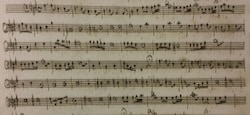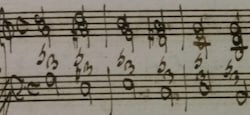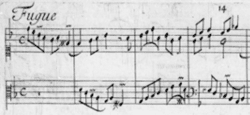The Leaping Romanesca Set with Stretto
This is another follow-up on my essays The Leaping Romanesca (The Pachelbel Pattern): The Basics, The Leaping Romanesca: Two Part Embellishment (Part 1), The Leaping Romanesca: Two-Part Embellishment (Part 2)) and The Leaping Romanesca: Embellishing Three-Part Settings. In this essay, I show how to use stretto in the context of the Leaping Romanesca. Again, my […]
The Leaping Romanesca Set with Stretto Read More »






